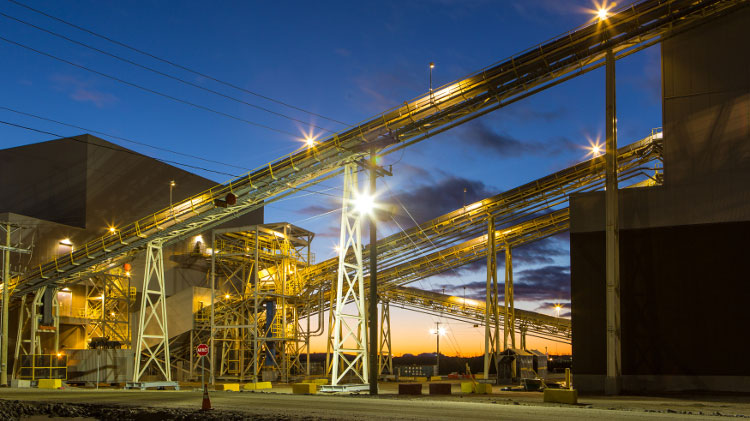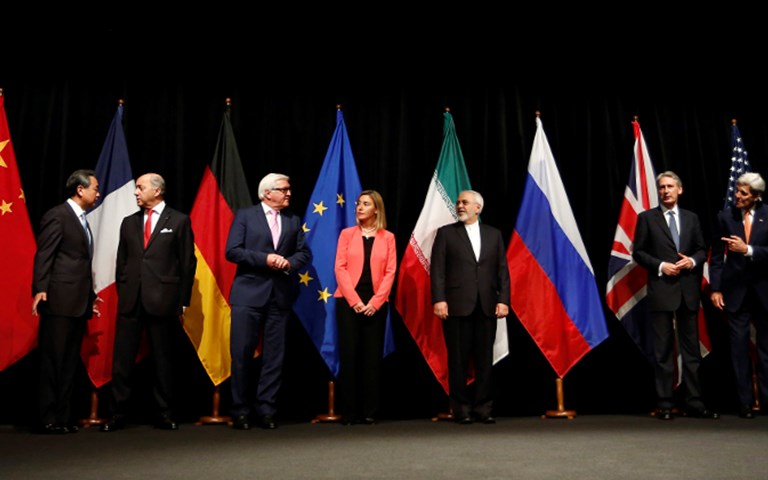Iran’s foreign minister Mohammad Javad Zarif (fifth from the left) and foreign ministers from China, France, Germany, the European Union, UK and the U.S. announced an anti-nuclear-proliferation deal in Vienna in July, leading to reduced sanctions on Iran. Flickr/Dragan Tatic
Now that Iran has fulfilled the anti-nuclear proliferation commitments it made last July, the door has opened to opportunity in the country. While some Canadian sanctions are still in place, a renewed flow of imports, exports and investments could kick-start the Iranian commodities sector.
“With these amendments to Canadian sanctions against Iran, Canadian companies will now be able to position themselves for new trade opportunities, but we will also maintain rigorous controls on any exports that raise serious proliferation concerns,” stated Chrystia Freeland, Canada’s international trade minister, in a Feb. 5 press release announcing the amended sanctions. Canada is maintaining trade restrictions on some entities and people involved in ballistic-missile activities as well as export restrictions on some products, especially those that could have military or nuclear uses.
Iran ranked 14th in the world in 2015 for steel production, and 16th for iron production, according to information on the website of a national mining holding company, the Iranian Mines and Mining Industries Development and Renovation Organization (IMIDRO).
The country’s commodities market has been relatively insulated from the global downturn because most of the base metals produced in Iran are consumed domestically. Any additional post-sanctions production would likely stay in the country, feeding its continuing development and reducing its reliance on imports, said Farshad Rashidi-Nejad, a senior lecturer at the University of New South Wales’ School of Mining Engineering. In 2014, Iran produced 16.3 million tonnes of crude steel – mostly from IMIDRO – but the country still needed to import 3.7 million tonnes, according to the World Steel Association’s annual report. China, India, South Korea, and Russia all export forms of steel to Iran, according to MIT Media Lab’s Observatory of Economic Complexity.
“Iran has many mineral resources and ore reserves. Not all of them have been prospected and explored today as they have been in developed countries like the U.S., Canada, and Australia,” Rashidi-Nejad said. The country has over 68 types of minerals available to mine, according to a presentation from IMIDRO, including significant reserves of iron ore (2.7 billion tonnes), copper (2.6 billion tonnes), zinc (11 million tonnes) and barite (10 million tonnes).
Bringing down technical barriers
After the Iranian Revolution in 1979, the government began to increase investment in mining projects, Rashidi-Nejad said. But when Canada and other nations imposed sanctions in the mid-2000s due to Iran’s developing nuclear program, the flow of investments and equipment into the country was restricted, crippling developing mining projects.
“The supply of equipment was the main challenge during the period of sanctions,” Rashidi-Nejad said. Companies including ABB from Switzerland, Siemens from Germany and General Electric from the United States were not able to export vital pieces of equipment to Iran, he said.
As a manager at Iran’s National Iranian Copper Industries Company (NICICO) in 2006, he experienced the challenge firsthand. One of the concentrator plants he worked on was ready, but it was missing a key part of the real-time assaying and process control system because it contained radioactivity. “I remember it was very, very difficult to optimize the operation, to control the process. We had to use manual sampling,” he said.
Paul Robinson, director of CRU Group, a London-based business intelligence firm, concurred. “Will the lifting of restrictions on Western mining equipment have an impact on Iran’s ore processing capabilities? Absolutely,” Robinson said, adding it could result in increased efficiency at existing facilities.
Selling equipment is one thing – Iran is also hoping for new foreign investment. Mehdi Karbasian, chairperson of IMIDRO, a key player in the country’s important copper, steel and aluminum industries, announced the country’s mining sector would need about $20 billion of foreign investment to meet the government’s production targets during a presentation at the International Mining and Resources Conference in Melbourne in November. Rashidi-Nejad said the government’s annual production targets for 2025 are 55 million tonnes of steel, 800,000 tonnes of copper, 1.5 million tonnes of aluminum and 300,000 tonnes of zinc. (Iran’s copper smelters produced 270,000 tonnes in 2012, while aluminum production was 820,000 tonnes of bauxite and 230,000 tonnes of metal ingots. The country produced 80,000 tonnes of zinc metal that year.)
While there are opportunities for investment and development, Rashidi-Nejad and Robinson agree that investing in Iranian projects still comes with risk. The country’s political environment remains a concern. “Potential investors need to be cognizant – they need to be wary – that Iran is still developing or re-developing its mining and mineral laws,” Robinson said.
International politics could also change the investment landscape. As quickly as sanctions were lifted, they could be re-implemented; the nuclear deal has a sanctions “snap-back” mechanism should Iran not fulfill its obligations. Canada’s embassy in Tehran also remains closed, as it has been since 2012. The government has not established a timeline to reopen it.
The pioneer spirit
Private-sector companies may find the environment particularly challenging, Rashidi-Nejad said. “Many of the companies in Iran are state-owned or state-backed companies. To date, the main agreements that have been signed are between the Iranian government and some European countries,” he added.
Italian equipment supplier Danieli and IMIDRO committed to a €2-billion joint venture in January. Outotec has also announced contracts to supply iron ore pelletizing and process technology to two plants in Iran, both expected to be commissioned in the next three years. Kalle Härkki, Outotec’s leader for their minerals processing division, called the most recent investment, announced in September, “a significant milestone for Outotec in the quickly-developing Iranian iron and steel industry.”
Kobe Steel and Japan’s national oil, gas and metals company (JOGMEC) also discussed investments with IMIDRO in August, and Indian firms KIOCL and NALCO are considering building a $59-million iron ore pellet plant and a $2-billion smelter in Iran, respectively.
Potential investors in an Iranian project should still examine all the documents they would want to see if they were looking at any other project, including environmental and social impact assessments and feasibility studies, Rashidi-Nejad said.
“I think foreign investors should consider the opportunities in Iran case-by-case.”



